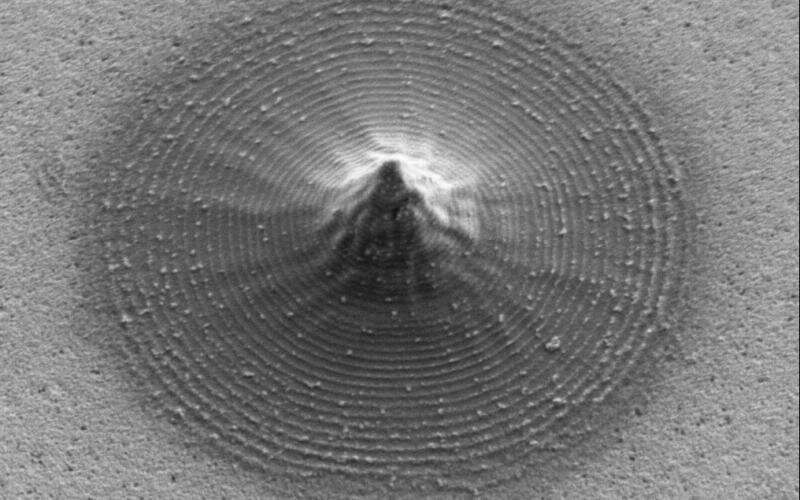An on-chip carbonized electrode microstructure from a scanning electron microscope. Credit: ORNL, U.S. Dept. of Energy
Scientists at Oak Ridge National Laboratory and the University of Tennessee designed and demonstrated a method to make carbon-based materials that can be used as electrodes compatible with a specific semiconductor circuitry.
The work bridges nanoscale 3-D printing and widely available processes for complementary metal-oxide-semiconductor, or CMOS, technologies to enable biosensors for biomedical applications.
3-D printing electrodes on CMOS circuitry from a polymer precursor requires high, yet regulated, temperatures—typically around 900 degrees Celsius—to carbonize the electrode structure. The challenge is to avoid damaging the CMOS chip.
The team's novel method, performed at the Center for Nanophase Materials Sciences at ORNL, used two photon polymerization and annealing processes to achieve and verify carbonization below 550 degrees.
"We've shown that you can convert a polymer to carbon directly on a chip in a way that can be useful for electrochemical sensing," said ORNL's Nickolay Lavrik.
More information: Mohammad Aminul Haque et al. Carbonization of 3D printed polymer structures for CMOS-compatible electrochemical sensors, Journal of Vacuum Science & Technology B (2020). DOI: 10.1116/6.0000266
Provided by Oak Ridge National Laboratory






















